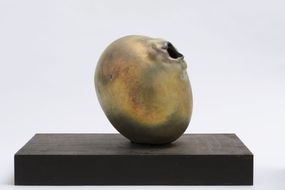From 22 February to 28 January 2025
A new stage in the discovery of the beauty of silk in the textile collections of Palazzo Madama - Civic Museum of Ancient Art of Turin. The rotation of the artefacts exhibited in the fabric room of the museum, curated by Maria Paola Ruffino, offers a journey into textile art from the 14th to the 20th century, with a new choice of fabrics and clothes that runs along the common thread of silk.
Velvet, the richest and most grandiloquent of fabrics, illustrates the splendor of late medieval and Renaissance fabrics, often woven with gold, worked in Italy and requested by every aristocracy, not just Europe. Florentine is the cloth with the iconic pomegranate and thistle flower motif, in gold and crimson, while the more refined green and silver 'arabesque' velvet, of oriental inspiration, is also Florentine, very close to that produced for Cosimo de Medici's bride , Eleonora of Toledo, who wears it in the famous portrait painted by Bronzino around 1545, preserved in the Uffizi in Florence.
Through the geometric patterns that characterize the decorative compositions of the second half of the 16th century, the journey touches on the flowers and scrolls of the Baroque taste to arrive at the imaginative designs developed in Lyon for clothing in the 18th century. Grace and lightness dominate the design, which combines elements of the natural world, rendered in an extremely naturalistic way, with architecture, chinoiserie and exoticism, in compositions of great variety and effect. From the mid-eighteenth century, textile decoration underwent the progressive simplification that accompanies the affirmation of the neoclassical taste: we follow it in the fabrics in which the flowers are miniaturized and overlap with striped backgrounds, then leaving only the stripes as the protagonists.
In the historicist climate of the second half of the nineteenth century, and again in the following century, the various decorative models developed in previous centuries would return in large numbers, revisited by textile manufacturers taking inspiration from ancient artefacts collected in museums. This long journey in the history of fabric is illustrated at Palazzo Madama not only by two-dimensional cloths, but also by a group of male and female garments, from the eighteenth to the twentieth century: embroidered tailcoats and waistcoats, a female robe and a caracò with large flowers, dresses in satin and taffeta with bright and surprisingly iridescent colours, which open up the view on the history of fashion and how silk has always been the absolute protagonist.

Piazza Castello, Turin, Italy
Opening hours
| opens - closes | last entry | |
| monday | 24:00 - 24:00 | |
| tuesday | 10:00 - 18:00 | |
| wednesday | 10:00 - 18:00 | |
| thursday | 13:00 - 21:00 | |
| friday | 10:00 - 18:00 | |
| saturday | 10:00 - 18:00 | |
| sunday | 10:00 - 18:00 |
Friday, December 24 OPEN from 10 am to 2 pm (closed in the afternoon)
Saturday, December 25 CLOSED
Friday, December 31 OPEN from 10 am to 2 pm (closed in the afternoon)
Saturday, January 1 OPEN from 2 pm to 6 pm (closed in the morning)
Thursday, January 6 SPECIAL OPENING from 10 am to 9 pm

From 31 October to 1 March 2026
San Giorgio. The journey of a holy knight from the East to Genoa.

Royal Palace Museum, Genoa

From 11 October to 2 March 2026
Hands-Craft: Lucio Fontana's ceramics

Peggy Guggenheim Collection, Venice